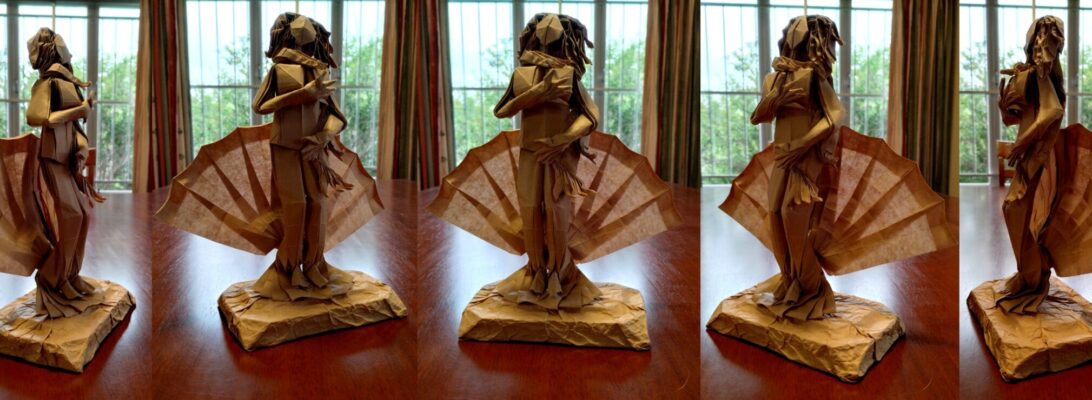I saw this lovely bit of geometry and reasoned it was actually just a repetitive tessellation:
The folds, whilst tiresome (there are a lot of them) are not difficult if you are careful, but the collapse was a new form of torture – it took ages to get all the pleats into place, wrestling with such a flexy squirmy model was tricksey.
In the end, it is soft, pliable and great fun to play with – it has an odd material strength when stitched into a tube (via a line of stickeytape – shhhh) but then distorts and flexes in very sexy ways.
Great exercise in pleating, crimping and patience – had no idea it would take this long, but enjoyed it in a strange way











